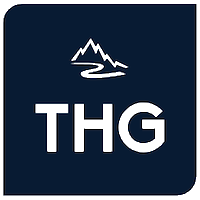5 Hierarchy of Needs (Maslow)
Abraham Maslow is well renowned for proposing the Hierarchy of Needs Theory in 1943. This theory is a classical depiction of human motivation. This theory is based on the assumption that there is a hierarchy of five needs within each individual. The urgency of these needs varies. These five needs are as follows:
1. Physiological:
Physiological needs are the basic needs of air, water, food, clothing and shelter. In other words, physiological needs are the needs for basic amenities of life.
2. Safety:
Safety needs include physical, environmental and emotional safety and protection. For instance; Job security, financial security, protection from animals, family security, health security, etc.
3. Social:
Social needs include the need for love, affection, care, belongingness, and friendship.
4. Esteem:
Esteem needs are of two types: internal esteem needs (self- respect, confidence, competence, achievement and freedom) and external esteem needs (recognition, power, status, attention and admiration).
5. Self-Actualization:
Self-Actualization needs include the urge to become what you are capable of becoming / what you have the potential to become. It includes the need for growth and self-contentment. It also includes desire for gaining more knowledge, social- service, creativity and being aesthetic. The self- actualization needs are never fully satiable. As an individual grows psychologically, opportunities keep cropping up to continue growing.
Applying Maslow's 5 Needs to the Workplace:
Maslow grouped the five needs into two categories; Higher-order needs and Lower-order needs. The physiological and the safety needs constituted the lower-order needs. These lower-order needs are mainly satisfied externally. The social, esteem, and self-actualization needs constituted the higher-order needs. These higher-order needs are generally satisfied internally.
Maslow’s Hierarchy has implications for Leaders and Managers:
As far as the physiological needs are concerned, the Leaders and Managers should give employees appropriate salaries to purchase the basic necessities of life. Breaks and eating opportunities should be given to employees.
As far as the safety needs are concerned, the Leaders and Managers should provide the employees job security, safe and hygienic work environment, and retirement benefits so as to retain them.
As far as social needs are concerned, the Leaders and Managers should encourage teamwork and organize social events.
As far as esteem needs are concerned, the Leaders and Managers can appreciate and reward employees on accomplishing and exceeding their targets. The management can give the deserved employee higher job rank / position in the organization.
As far as self-actualization needs are concerned, the Leaders and Managers can give the employees challenging jobs in which the employees’ skills and competencies are fully utilized. Moreover, growth opportunities can be given to them so that they can reach the peak.
Those Leaders and Managers that focus on the Higher-order needs of their people will find it helps create a culture that has many positive effects in terms of employee retention, satisfaction and productivity!
